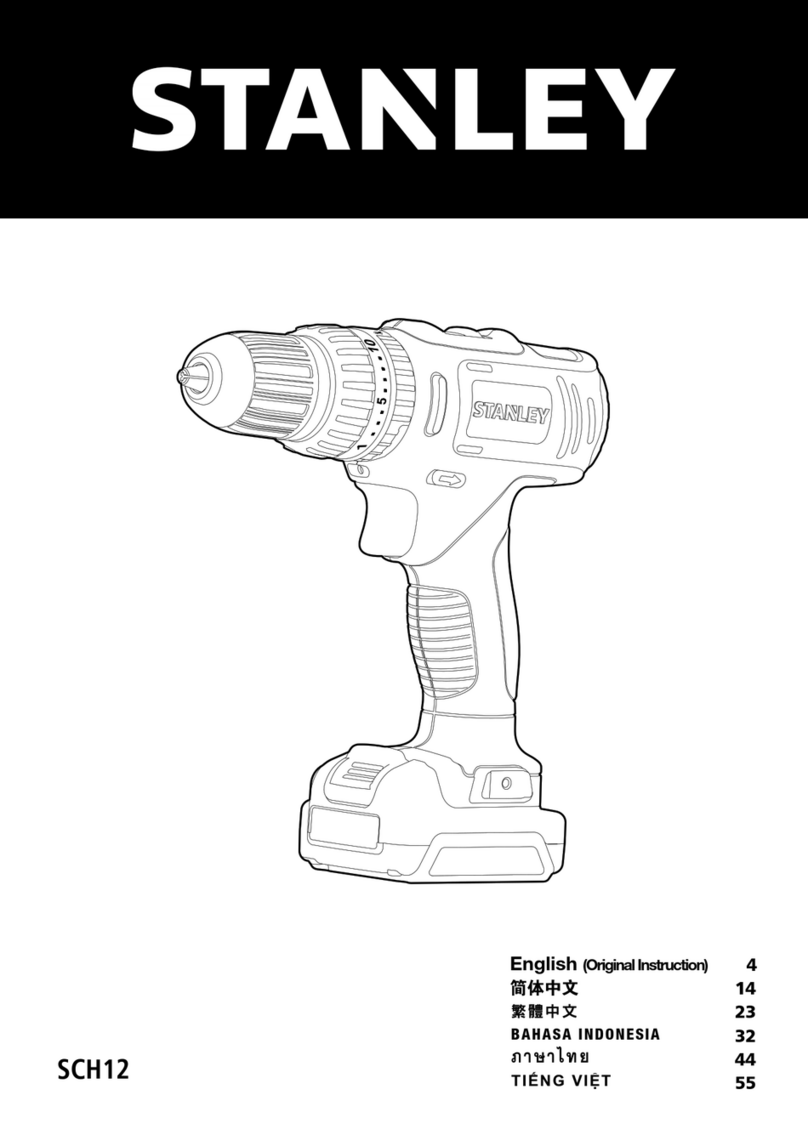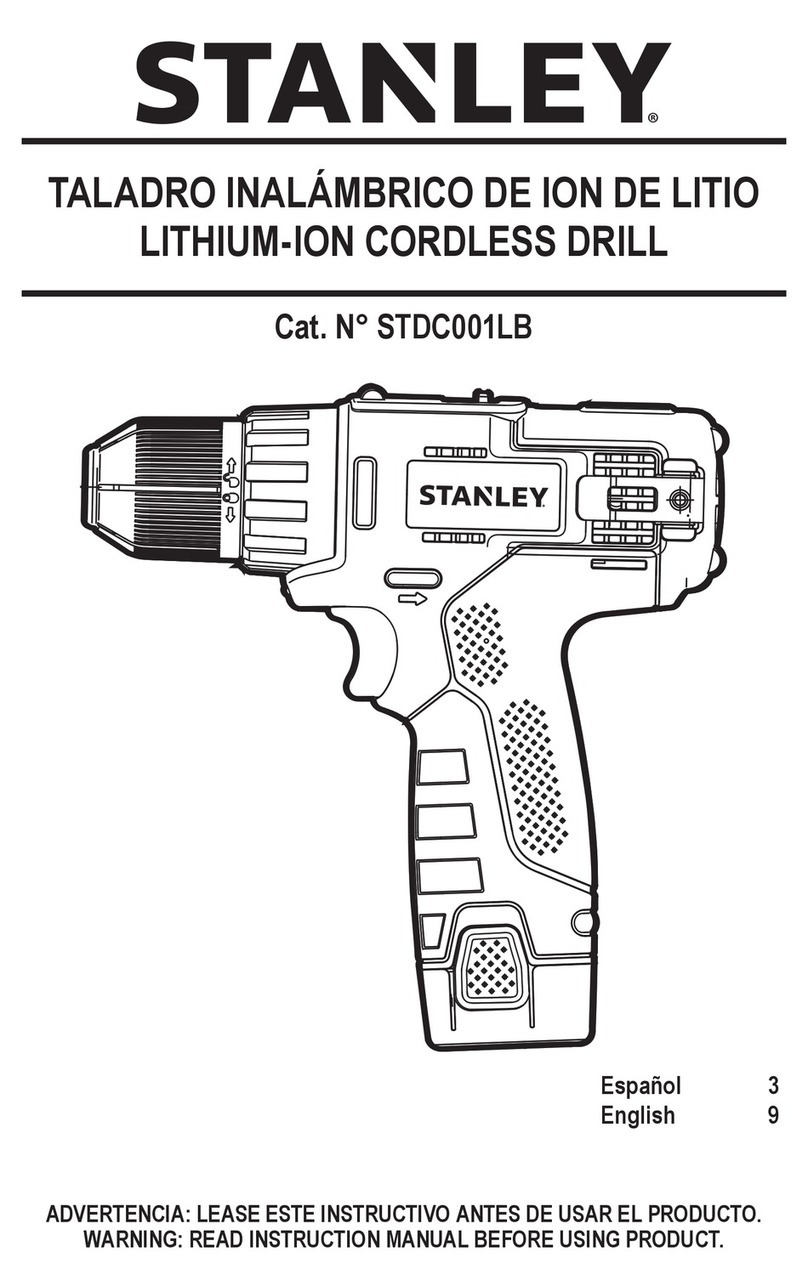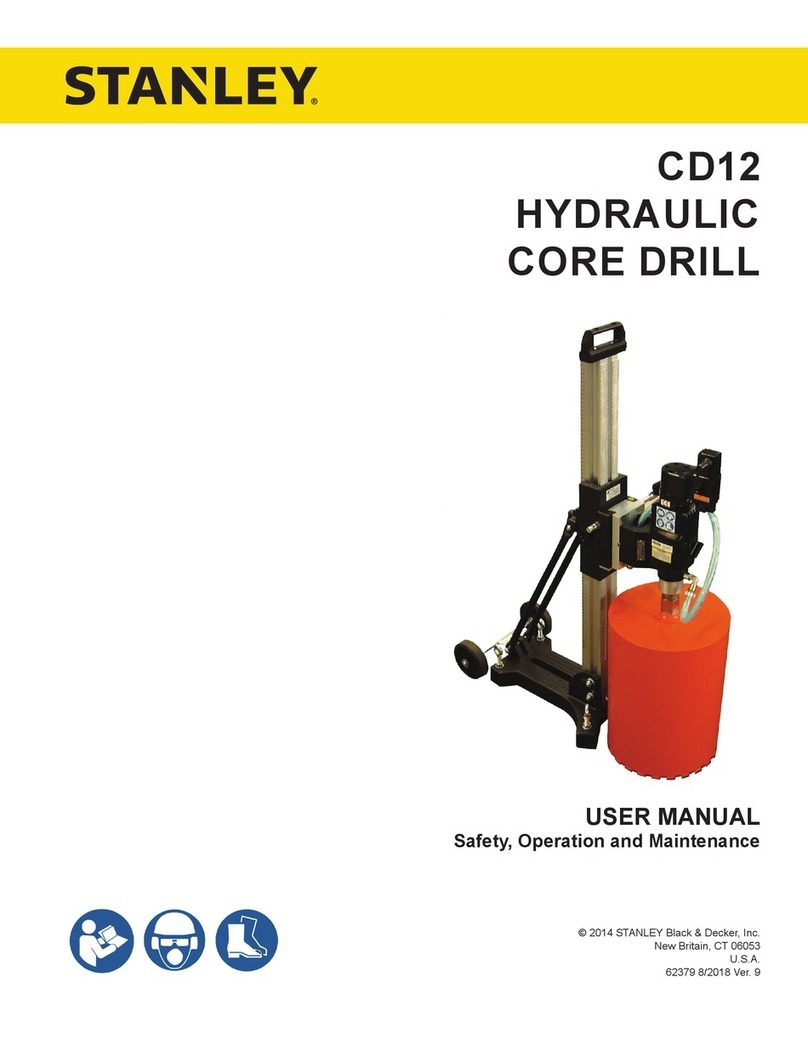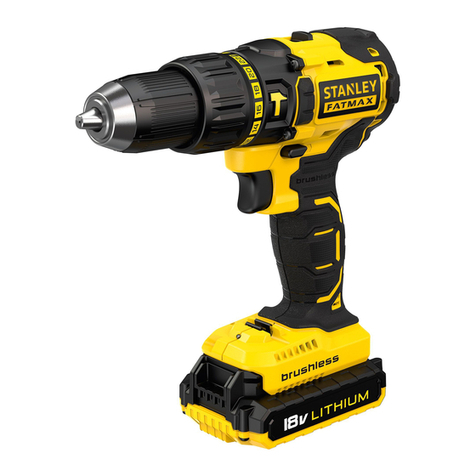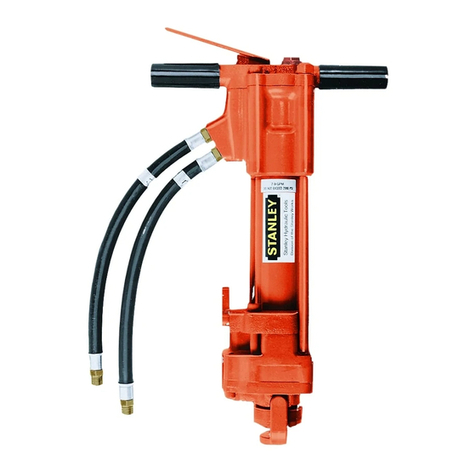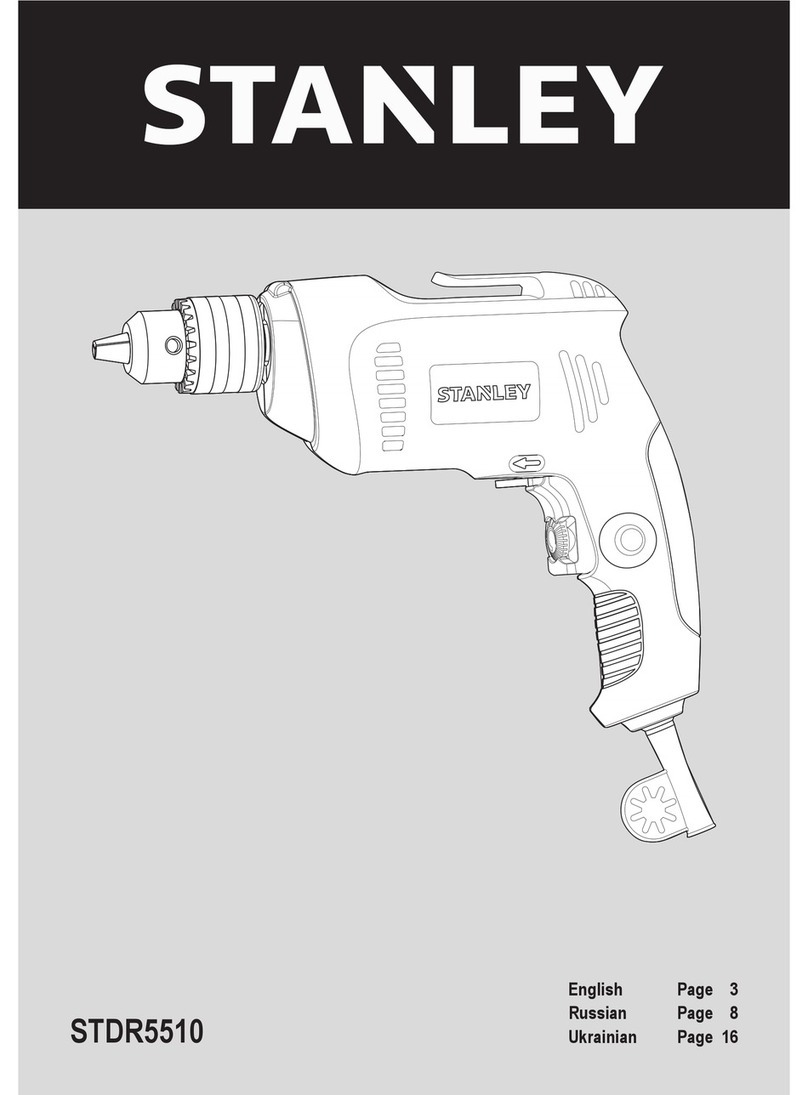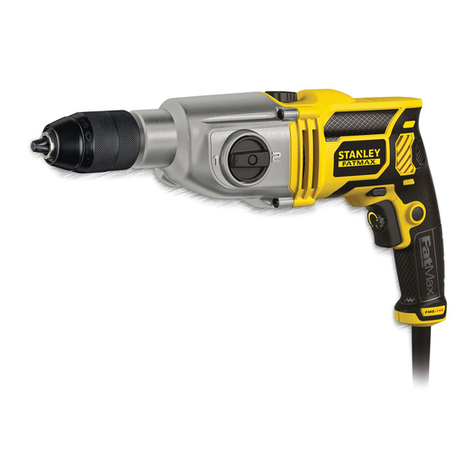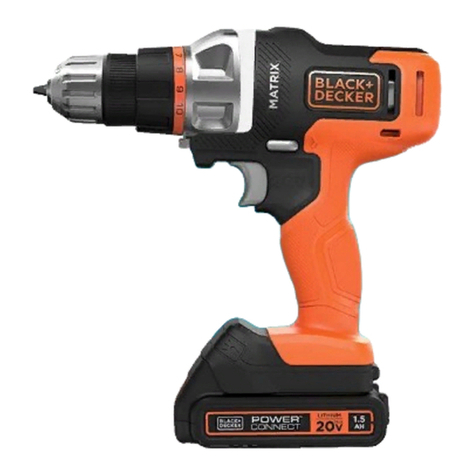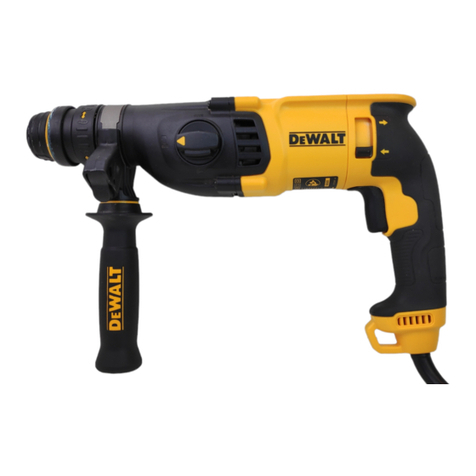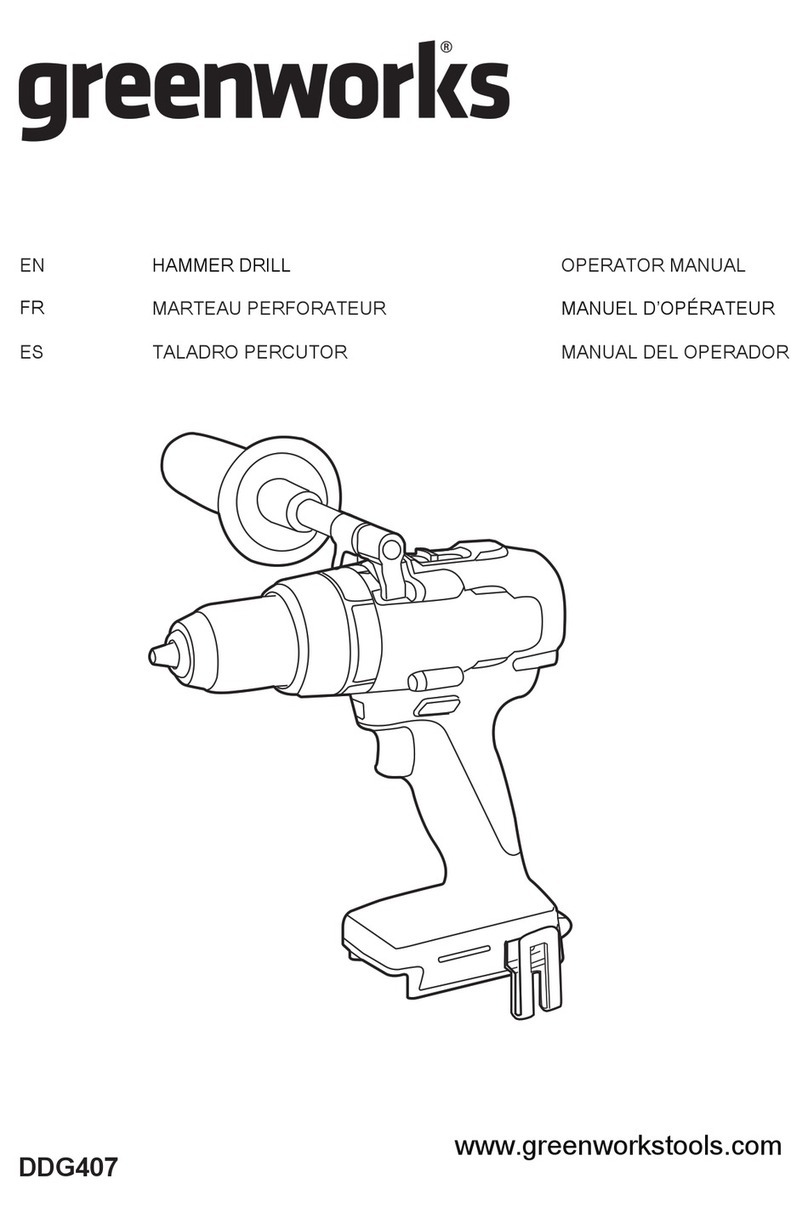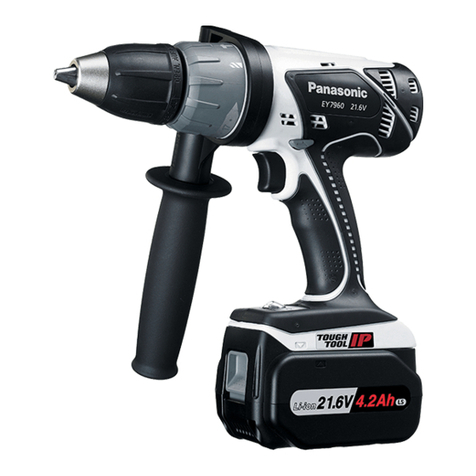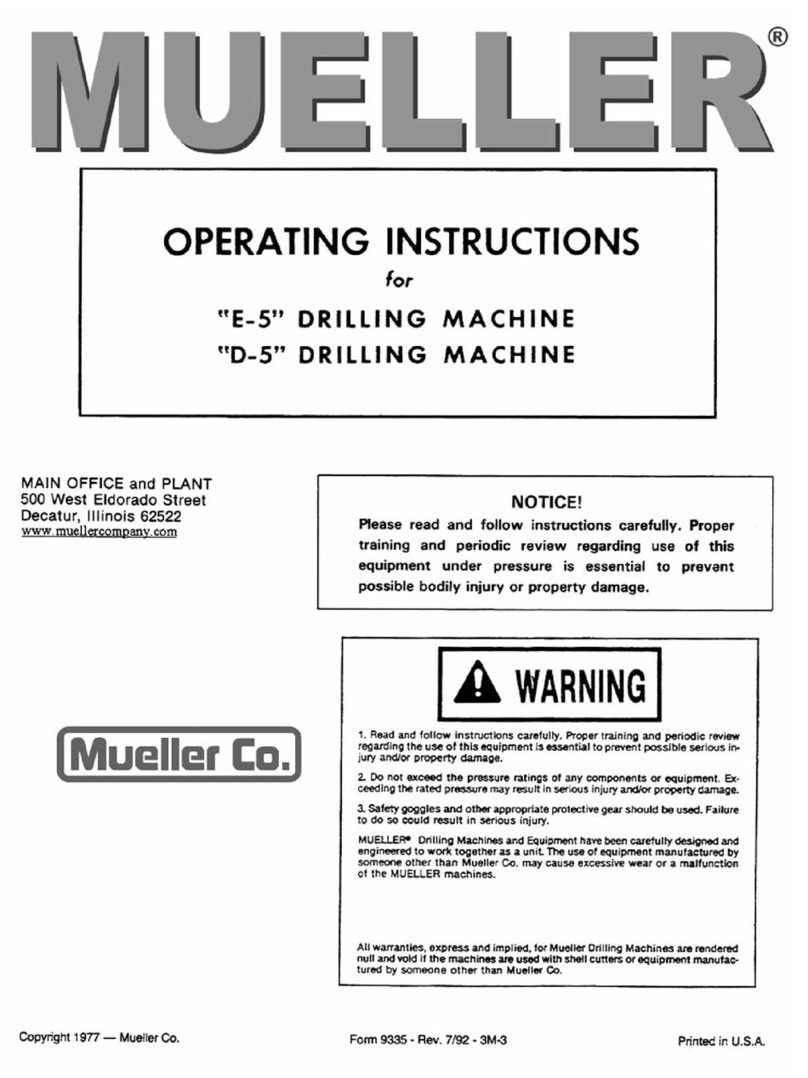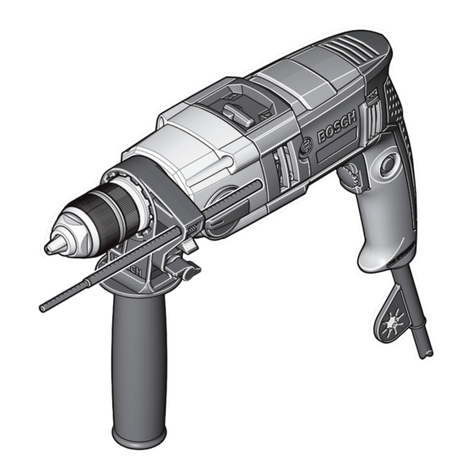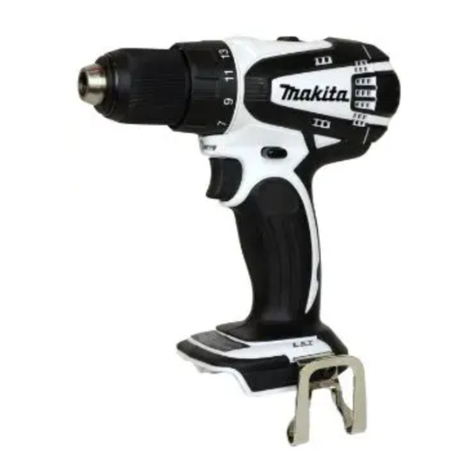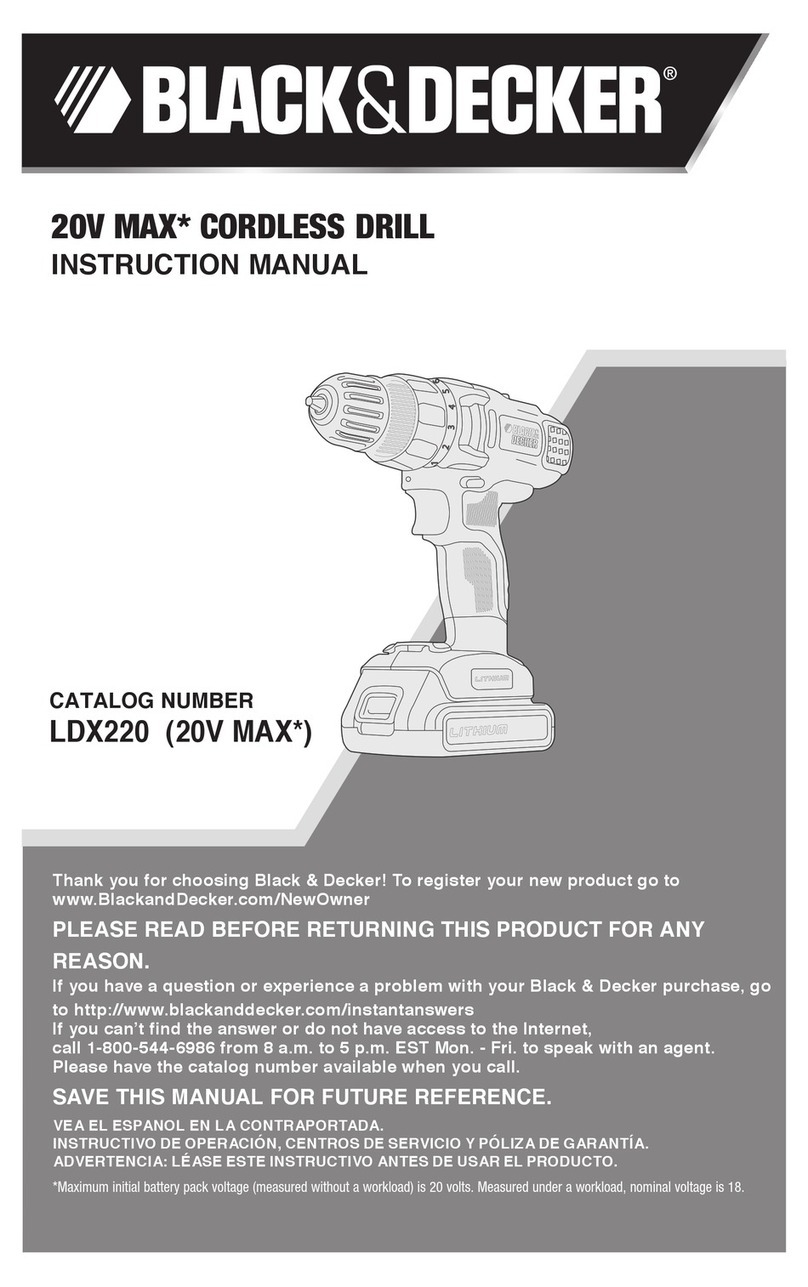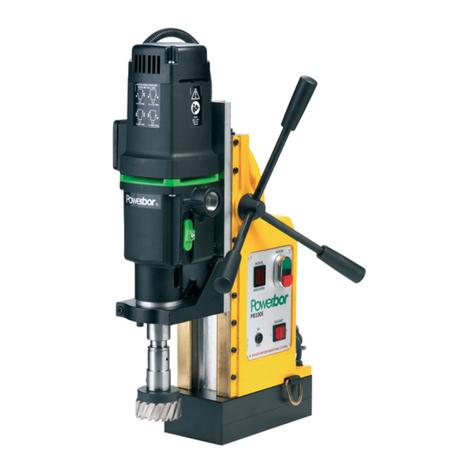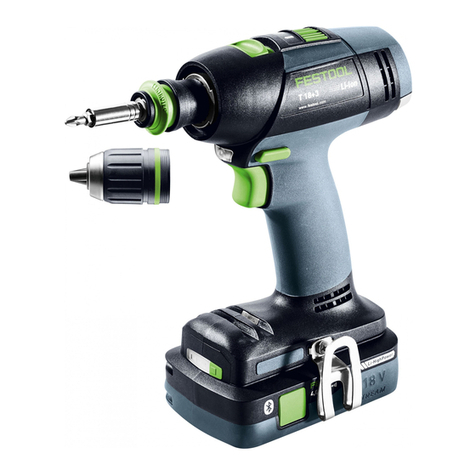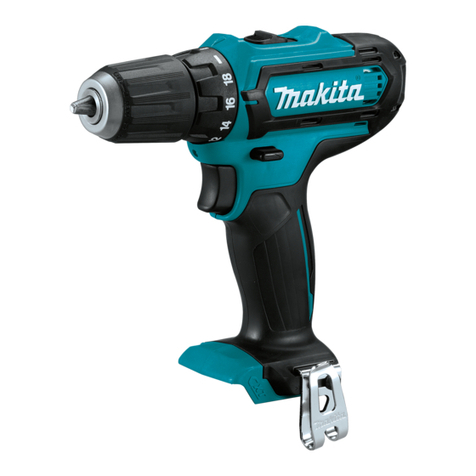before making any adjustments or removing/installing
attachments or accessories.
ProperHandPosition(Fig.A,H)
WARNING: To reduce the risk of serious personal injury,
ALWAYS use proper hand position as shown.
WARNING: To reduce the risk of serious personal injury,
ALWAYS hold securely in anticipation of a sudden reaction.
Proper hand position requires one hand on the main handle (9).
Triggerswitch(Fig.A)
To turn the tool on, squeeze the trigger switch (1). To turn the tool
off, release the trigger switch. Your tool is equipped with a brake.
The chuck will stop when the trigger switch is fully released.
The variable speed switch enables you to select the best speed
for a particular application. The further you squeeze the trigger,
the faster the tool will operate. For maximum tool life, use variable
speed only for starting holes or fasteners.
NOTE: Continuous use in variable speed range is not
recommended. It may damage the switch and should be avoided.
Forward/ReverseControlButton(Fig.A)
A forward/reverse control button (2) determines the rotational
direction of the tool and also serves as a lock off
To select forward rotation, release the trigger switch and depress
the forward/reverse control button on the right side of the tool.
To select reverse, depress the forward/reverse control button on
the left side of the tool.
The center position of the control button locks the tool in the off
position. When changing the position of the control button, be
sure the trigger is released.
NOTE: The first time the tool is run after changing the direction
of rotation, you may hear a click on start up. This is normal and
does not indicate a problem.
LED work light
There is a LED worklight (8) located under the torque adjustment
collar (3). The worklight will be activated when the trigger switch
is squeezed.
Note: The work light is for lighting the immediate work surface
and is not intended to be used as a flashlight.
TorqueAdjustmentCollar(Fig.A,D)
Turn function collar (9) to screw symbol. The torque adjustment
collar (3) is clearly marked with numbers and a drill bit symbol.
The collar should be rotated until the desired setting is located at
the top of the tool. Locators are provided in the collar to eliminate
the guess work when selecting fastening torque. The higher
the number on the collar, the higher the torque and the larger
the fastener which can be driven. To lock the clutch for drilling
operations, move function collar(9) to drill bit position.
NOTE: When using the hammer drill for drilling holes, be sure that
the function collar is set so the figure of the drill is aligned with the
center line on the top of the tool. Failure to do this will allow the
clutch to slip while attempting to drill.
GearShifter(Fig.A,D)
The dual range feature of your drill allows you to shift gears for
greater versatility.
To select the low speed, high torque setting, turn the tool off
and permit to stop. Slide the gear shifter (4) forward (towards
the chuck). To select the high speed, low torque setting, turn
the tool off and permit to stop. Slide the gear shifter back (away
from chuck).
Note: Do not change gears when tool is running. If you are
having trouble changing gears, make sure that the dual range
gear button is either completely pushed forward or completely
pushed back.
Keylesschuck(Fig.E)
Your tool features a keyless chuck with one rotating sleeve for
one-handed operation of the chuck. To insert a drill bit or other
accessory, follow these steps.
1. Lock the trigger in the OFF position as previously described.
2. Grasp the black sleeve of the chuck with one hand and use the
other hand to secure the tool. Rotate the sleeve counterclockwise
far enough to accept the desired accessory.
3. Insert the accessory about 19 mm (3/4") into the chuck and
tighten securely by rotating the chuck sleeve clockwise with one
hand while holding the tool with the other. Your tool is equipped
with an automatic spindle lock mechanism. This allows you to
open and close the chuck with one hand.
To release the accessory, repeat step 2 above.
WARNING: Do not attempt to tighten drill bits (or any
other accessory) by gripping the front part of the chuck and
turning the tool on. Damage to the chuck and personal injury may
result. Always lock off trigger switch when changing acces sories.
Be sure to tighten chuck with one hand on the chuck sleeve and
one hand holding the tool for maximum tightness.
Chuckremoval(Fig.F)
Turn the adjustment collar to the “drill” position and gear shifter
to position 1 (low speed). Tighten the chuck around the shorter
end of a hex key (not supplied) of 6.35 mm (1/4") or greater size.
Using a wooden mallet or similar object, strike the longer end
in the clockwise direction, as shown. This will loosen the screw
inside the chuck.
Open chuck jaws fully, insert screwdriver (or Torx tool if required)
into front of chuck between jaws to engage screw head. Remove
screw by turning clockwise (left-hand-thread). Place hex key
in chuck and tighten, as shown in Figure F. Using a wooden
mallet or similar object, strike key sharply in the counterclockwise
direction. This will loosen the chuck so that it can be unscrewed
by hand.
Chuckinstallation(Fig.G)
Screw the chuck on by hand as far as it will go and insert screw
(left-hand thread). Tighten screw securely. Tighten the chuck
around the shorter end of a 6.35 mm (1/4") or larger hex key
(not supplied) strike the longer end in the clockwise direction with




